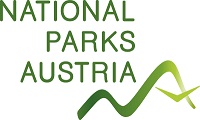“Natural paths” make it possible to experience natural processes in the Donau-Auen, Thayatal and Gesäuse national parks.
Orth/Donau (OTS) – In addition to preserving natural and near-natural habitats, national parks also serve as a recreational area for visitors who should be offered the most genuine natural experience possible. However, the designation of paths inevitably creates an obligation to secure them and thus to eliminate risks posed by trees. From now on, guests of the Austrian national parks will be able to experience the characteristic processes of natural forests, such as the death and decomposition phases of old trees, through a new category of path: the “natural path” is marked by information signs in the area.
The interventions on these natural routes are greatly reduced and thus enable the development of a rich flora and fauna along the way that is visible to visitors. “Aging trees have a very high ecological value. The designation of these natural paths is a milestone in order to better convey to guests the characteristics of intact natural habitats and to greatly reduce human interference in the natural zones of the national parks,” says Climate Protection Minister Leonore Gewessler.
The basis for the designation is provided by a tree liability concept, which is explained in detail in the publication “Tree Danger Management in Austria’s National Parks” by Karoline Zsak and Ernst Karner, published by Jan Sramek Verlag. The protection of the path from acute dangers is also guaranteed on natural paths, for example: For example, loose parts of trees protruding over the path are removed. However, dying and dead trees remain in the ecosystem. For visitors, this means moving on their own responsibility and being particularly careful along the relevant, marked forest sections.
An essential task of the Austrian national parks is to give nature space again so that it can develop its ecological processes undisturbed. “Old trees form the basis of life for a variety of organisms such as birds, bats, small mammals, insects, fungi and lichens. These require the different stages and conditions of the trees, including dead wood, as a habitat and source of food. We can now make this biodiversity much more tangible for guests,” says Edith Klauser, director of the Donau-Auen National Park.
Herbert Wölger, director of the Gesäuse National Park, adds: “The special conservation achievement of a national park forest lies in the fact that trees are not felled when they are at their best, but rather go through the entire cycle, including the decay phase. With the designation of natural paths, the decay phase of trees is not hidden from the view of visitors, but can also be conveyed – in accordance with our educational mission. We can better achieve our conservation and educational goals with natural paths.”
As a joint initiative by National Parks Austria, natural paths in the Donau-Auen, Thayatal and Gesäuse national parks can now be visited.
Further information about the natural paths can be found on the National Parks Austria website: https://www.nationalparksaustria.at/de/naturbelassenewege.html
About National Parks Austria
The umbrella organization National Parks Austria brings together the six Austrian national parks and has been promoting the dynamic development of protected areas, the implementation of joint projects and the public communication of shared concerns since 2011.
Questions & Contact:
National Parks Austria, Alissa Holleis
under.holleis@nationalparksaustria.at
Tel.: +43 2212 3450 79
